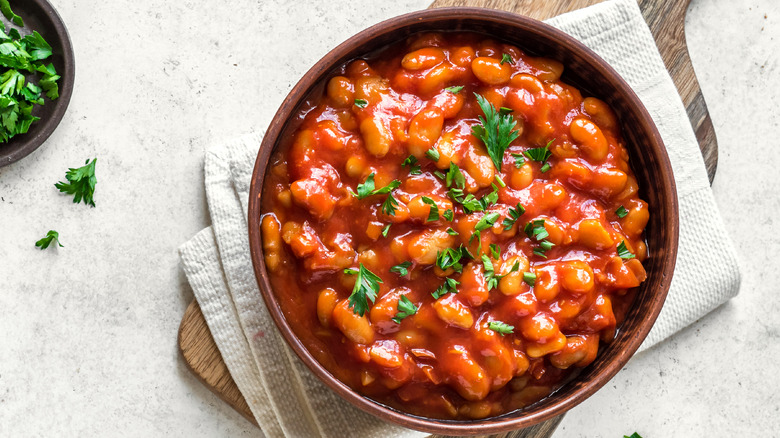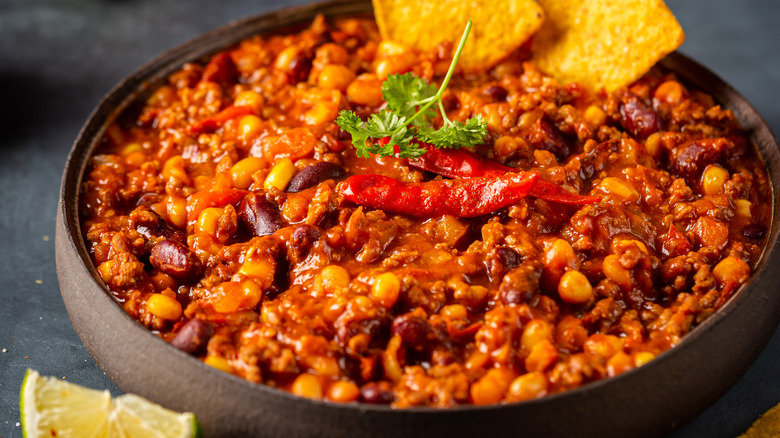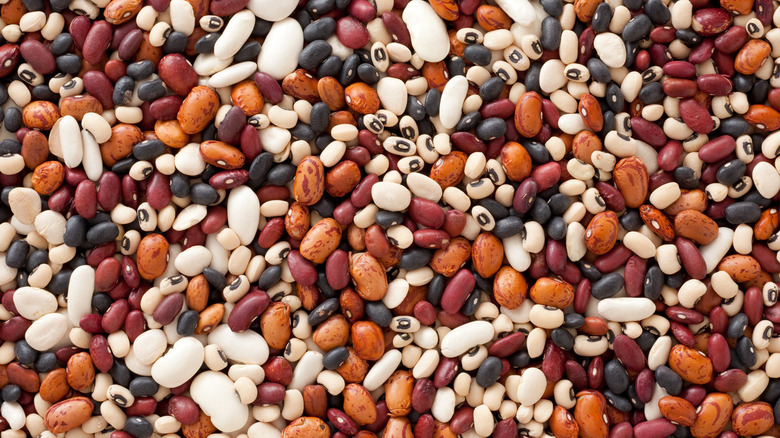What Are The Best Beans To Use In A Classic Chili?
Do you ever feel like recipes are just getting overly complicated? The classic chili recipe, for one, has been inundated with upgrades to elevate the chili's taste — so much so that one may overlook the standard components, such as beans. If you're inclined to throw any old can of beans into your chili, you may be compromising on flavor and texture. Worry not; there are options. The best beans to use for chili are pinto, kidney, and black beans. Their taste, density, and structure all contribute to the ultimate-tasting chili.
Moreover, a mixture of beans can lead to an even more pleasing chili. Stop taking the beans for granted — they could be the difference between satisfaction and disappointment.
It's essential to recognize why bean selection is integral to a classic chili recipe. The longer chili cooks, the better it tastes. However, the heat can break down certain beans into mush.
Beans are the key to a good chili
Kidney beans are an iconic staple, so much so that they've gained the name "chili bean." These dense beans can keep their shape throughout the cooking process and bring a meaty bite to chili's consistency. They are also excellent infusers, readily absorbing the flavors of the spices and seasonings they are cooked with.
The only drawback is the sweet undertones found within kidney beans, which not everyone is a fan of. Luckily, black beans are an alternative. These beans have a similar structure and density to kidney beans, although they are usually smaller. They can also take on flavor like kidney beans. However, their tender bite also makes them a good substitute for meat if you want to make a vegan chili.
Lastly are pinto beans, which are a slightly controversial option because their texture is so easily broken down. (They are, after all, the common choice for refried beans.) However, pinto beans are mild and creamy, which makes them an excellent taste in contrast to the tomato acidity of the chili. If you're adding these in, add them towards the end of the chili cooking time. This way, they'll keep a little bite. Great Northern and Cannellini beans are also good inclusions. However, they traditionally appear in white chili over the classic tomato version.
What else can impact the beans?
You can't discuss beans in chili without drawing attention to how they're prepared. Canned beans are a convenient option, but because they're pre-cooked, they can quickly become bloated and turn to mush. In this sense, it can be difficult to tell when the perfect time to add the beans is, as you want them to capture flavor but retain their shape. On the other hand, dried beans take longer to prepare, but it's simpler to navigate the flavor/texture hurdle. The longer the beans soak before cooking, the softer they'll be in the chili.
If you're working with dried beans, it's vital to add acidic ingredients, such as tomatoes or wine, once the beans are cooked. These can prevent the beans from reaching that optimum tender texture. A note of caution if you plan to use kidney beans: Canned beans are considered safer, as undercooked kidney beans are potentially poisonous to humans. And if you're selecting any canned variety, make sure the can isn't dented.
The next time you make chili, carefully consider which beans you plan to use. After all, they're the stars of the chili show.


